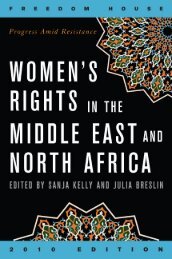Women and Politics in the Third World
Women and Politics in the Third World
Women and Politics in the Third World
Create successful ePaper yourself
Turn your PDF publications into a flip-book with our unique Google optimized e-Paper software.
WOMEN AND THE STATE IN THE THIRD WORLD 29<br />
any particular problems for women, whe<strong>the</strong>r <strong>Third</strong> <strong>World</strong> women can relate such<br />
a Western-centred debate to <strong>the</strong>ir own lives, <strong>and</strong> whe<strong>the</strong>r an analysis of <strong>Third</strong><br />
<strong>World</strong> states by fem<strong>in</strong>ists might throw up questions for fem<strong>in</strong>ists <strong>the</strong>oris<strong>in</strong>g <strong>and</strong><br />
debat<strong>in</strong>g <strong>the</strong> state, have not been asked. Are <strong>the</strong>re any particular features of <strong>the</strong><br />
post-colonial state that need to be taken <strong>in</strong>to account by <strong>Third</strong> <strong>World</strong> women<br />
when <strong>the</strong>y consider <strong>the</strong>ir own relationship with <strong>the</strong> state? In <strong>the</strong> next section I<br />
discuss <strong>the</strong> postcolonial state from this perspective.<br />
The post-colonial state<br />
One of <strong>the</strong> most <strong>in</strong>terest<strong>in</strong>g developments <strong>in</strong> state <strong>the</strong>ory s<strong>in</strong>ce <strong>the</strong> Second <strong>World</strong><br />
War has been <strong>the</strong> <strong>the</strong>oris<strong>in</strong>g of <strong>the</strong> post-colonial states <strong>and</strong> <strong>the</strong> developmental<br />
states. The latter, primarily Japan <strong>and</strong> <strong>the</strong> East Asian economies, were first<br />
<strong>the</strong>orised by Chalmers Johnson (1982). The case studied by Johnson were all<br />
characterised as ‘strong’ states. This description fed <strong>in</strong>to <strong>and</strong> from <strong>the</strong> already<br />
exist<strong>in</strong>g work of Gunnar Myrdal (1968; 1970) where he dist<strong>in</strong>guished between <strong>the</strong><br />
‘strong’ state—<strong>in</strong> this case his native Sweden—<strong>and</strong> <strong>the</strong> ‘weak’ or ‘soft’ state—<br />
India. The def<strong>in</strong><strong>in</strong>g features of <strong>the</strong> ‘strong’ state <strong>in</strong> this literature have been ‘state<br />
capacity’ to ‘implement logistically political decisions throughout <strong>the</strong> realm’<br />
(Mann 1984: 189). Fur<strong>the</strong>r, strong states are characterised by a high degree of<br />
bureaucratic autonomy from <strong>in</strong>stitutions <strong>and</strong> groups <strong>in</strong> civil society. They are also<br />
seen as corporatist—whe<strong>the</strong>r democratic or authoritarian—<strong>and</strong> as such <strong>the</strong>re is ‘a<br />
significant degree of <strong>in</strong>stitutionalised <strong>in</strong>teraction <strong>and</strong> dialogue between <strong>the</strong> state<br />
elites <strong>and</strong> autonomous centres of power with<strong>in</strong> civil society’ (Onis 1991: 123). In<br />
<strong>the</strong> soft states, on <strong>the</strong> o<strong>the</strong>r h<strong>and</strong>, was <strong>the</strong> ‘general <strong>in</strong>cl<strong>in</strong>ation of people to resist<br />
public controls <strong>and</strong> <strong>the</strong>ir implementation’ (Myrdal 1970: 209). The focus was<br />
<strong>the</strong>refore on <strong>the</strong> levels of successful implementation of decisions achieved by<br />
particular states. A discussion <strong>the</strong>refore arose about factors that would enhance or<br />
reduce this capacity (see Charlton <strong>and</strong> Donald 1992). Michael Mann (1984)<br />
contributed to this debate by dist<strong>in</strong>guish<strong>in</strong>g between ‘despotic’ <strong>and</strong><br />
‘<strong>in</strong>frastructural’ power. Despotic power <strong>in</strong> Mann’s scheme ‘denotes power by <strong>the</strong><br />
state elite itself over civil society’ with<strong>in</strong> ‘rout<strong>in</strong>e, <strong>in</strong>stitutionalised negotiation<br />
with civil society groups’ (Mann 1984: 188). Infrastructural power ‘denotes <strong>the</strong><br />
power of <strong>the</strong> state to penetrate <strong>and</strong> centrally co-ord<strong>in</strong>ate <strong>the</strong> activities of civil<br />
society through its own <strong>in</strong>frastructure’ <strong>and</strong> is <strong>the</strong>refore better able to implement<br />
state policy (Mann 1984: 190). This dist<strong>in</strong>ction is important to emphasise that<br />
<strong>the</strong>re exists no direct, l<strong>in</strong>ear co-relation between ‘state autonomy’ <strong>and</strong> ‘state<br />
capacity’ (Onis 1991: 123). The first will not automatically lead to <strong>the</strong> o<strong>the</strong>r.<br />
Ano<strong>the</strong>r dist<strong>in</strong>ction made between <strong>the</strong> ‘strong’ <strong>and</strong> ‘weak’ states was <strong>the</strong> clearly<br />
def<strong>in</strong>ed relationship between <strong>the</strong> executive <strong>and</strong> <strong>the</strong> bureaucracy on <strong>the</strong> one h<strong>and</strong><br />
(‘<strong>the</strong> politicians reign, <strong>the</strong> bureaucrats rule’) <strong>and</strong> a close co-operation between <strong>the</strong><br />
state <strong>and</strong> <strong>the</strong> ‘peak <strong>in</strong>terest groups’ <strong>in</strong> civil society on <strong>the</strong> o<strong>the</strong>r. In <strong>the</strong> ‘weak’<br />
states <strong>the</strong>se l<strong>in</strong>kages were weak too. The bureaucracy is of particular <strong>in</strong>terest <strong>in</strong><br />
this debate as <strong>in</strong> <strong>the</strong> ‘strong’ states its size is kept to <strong>the</strong> m<strong>in</strong>imum, thus mak<strong>in</strong>g it




